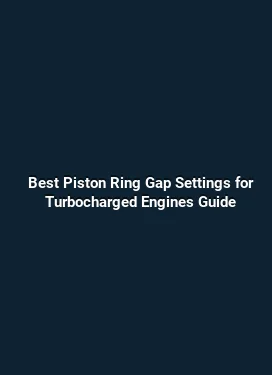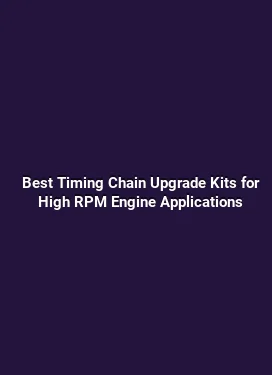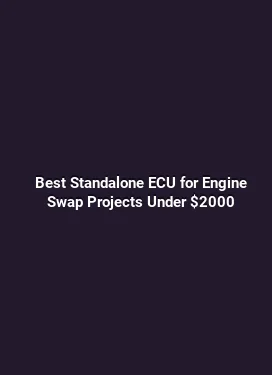Best Forged Crankshaft Brands for BMW S54 High Performance Builds
Understanding the Role of a Forged Crankshaft in S54 Performance Applications

In high-performance S54 builds, the crankshaft is one of the core components that determines durability, power delivery, and reliability under elevated stresses. A forged crankshaft offers superior strength-to-weight characteristics compared to a stock cast crank, enabling higher horsepower, improved load handling, and greater resistance to fatigue during aggressive driving, track days, or forced-induction setups. When selecting a forged crank for the S54 platform, it is essential to consider material composition, manufacturing process, journal sizes, stroke options, and how the crank interacts with the engine’s oiling system and crankcase dynamics.
Performance goals largely drive crankshaft choices. A street-focused upgrade might prioritize low-end torque and drivability, while a race-oriented build would emphasize maximum RPM stability, peak power, and long-term resilience under sustained high loads. Additionally, the S54’s sophisticated valvetrain and high-revving nature mean that harmonics, balance, and inertia must be harmonized with the rest of the rotating assembly. Reputable forged crank options come from brands that offer precise tolerances, compatibility with aftermarket rods, and documented fitment for the S54 lineage or closely related BMW inline-six platforms.
Key Brands and What They Bring to BMW S54 Builds
Several brands are recognized in the performance community for providing robust forged crankshafts that can suit S54-based builds when proper adaptation is performed. The following brands are commonly discussed in professional and enthusiast circles for high-strength, race-oriented applications. It is crucial to verify current model availability and fitment with a qualified engine builder, as product lines may evolve and require specific journal sizes, timing gear interfaces, or clearance modifications.
Brand A (example line) is known for advanced forging technology and a focus on rigidity under elevated RPM. The design frequently emphasizes reduced rotational mass while maintaining strength through optimized fillet radii and refined microstructure. For S54 builds, this brand’s forged crank can be paired with compatible rod packages and pin strategies to achieve strong, repeatable power delivery across a wide RPM range.
Brand B (example line) emphasizes modularity in stroke options and journal diameters. Your engine program can leverage this flexibility to tailor the crank to the desired torque curve and peak power target. The brand also often provides balancing data and recommendations for oiling system upgrades to complement high-demand configurations.
Brand C (example line) focuses on minimal mass while preserving torsional stiffness. This approach can reduce parasitic losses and improve throttle response, which is particularly beneficial for quick-spooling setups or turbocharged S54 builds. Proper balancing and fine-tuning of the crank harmonics are essential when adopting this approach.
Brand D (example line) is renowned for quality control and customer support for high-horsepower BMW builds. This brand often pairs crank options with recommended crankshaft dampers, main bearing clearances, and oiling strategies that are validated on engines with forced induction or high compression ratios.
In practice, the most critical factors when choosing a forged crank for an S54 are ensuring compatibility with the engine’s cam timing gear arrangement, main journal geometry, and rod journal spacing. The S54 family has variations in production years and displacement, so cross-checking with the engine builder and the crank manufacturer’s fitment data is essential before committing to a purchase.
Practical Fitment and Balancing Considerations

One of the most impactful steps in a high-performance rebuild is ensuring precise balancing. A forged crank typically requires dynamic balancings, such as checking unbalance at each journal and confirming the overall system balance with the rest of the rotating assembly. If the crank is lighter than factory, the balance may shift, demanding a revised counterweight setup and potentially lighter flywheel choices to preserve drivability. An engine builder will often provide a detailed balance plan, including the expected rotational inertia in %/g-cm², which informs selection of pistons, rods, and rings to maintain smooth operation at target RPMs.
Oiling strategy is another pivotal topic. Forged cranks place higher demands on oil pressure and oil flow to ensure stable bearing cooling and lubrication at high RPM and elevated power. Upgrades such as a high-capacity oil pump, oil squirters for pistons, a baffled oil pan, and an enhanced oil pickup can be necessary to prevent starvation during cornering, braking, and sustained overload. Some manufacturers offer crank-specific oiling recommendations or integrated dampers designed to work in concert with the crank’s geometry, further supporting reliability in demanding driving scenarios.
Engineering Nuances: Torque, Harmonics, and Reliability
The S54’s torque delivery profile, high-rev potential, and tight tolerances demand careful attention to how a forged crank interacts with the rest of the rotating assembly. The balance between inertia and stiffness is critical: too much mass can blunt throttle response and increase parasitic losses, while insufficient mass can reduce strength margins under peak loads. The choice of connecting rods, pistons, and ring gaps should be coordinated with the crank’s properties to achieve the desired engine response without compromising reliability.
Harmonics management is often discussed in performance circles, especially for engines that operate near the upper envelope of their RPM capability. A forged crank, when paired with a well-mated damper and properly tuned timing, can help maintain clean throttle transitions and reduce the risk of crankshaft flexing under high boost conditions. It is also common to see revised crankshaft dampers or lightweight dampers to complement the altered inertia, helping to suppress torsional vibrations that can travel through the crank at extreme RPMs. Tuning strategies that respect these dynamics—such as conservative ignition timing in early rev bands and gradual advance in higher RPM ranges—contribute to a more linear and predictable power curve.
Integration with Modern Engine Management and Tuners’ Playbooks
Advanced engine management surfaces and tuners leverage data from robust engine sensors to optimize fueling, ignition timing, and boost or valve timing in a forged-crank environment. In practice, the tuner will rely on high-resolution data from knock sensors, wideband O2 sensors, MAP or MAF readings, and EGT (exhaust gas temperature) channels to sculpt a fueling strategy that preserves efficiency while maximizing power. The forged crank’s characteristics influence required fuel delivery and ignition phasing, particularly in forced-induction configurations where turbocharger or supercharger stacks impose additional mechanical and thermal stresses. A well-planned calibration will include staged maps for boost onset, boost cut, and safe RPM limits, ensuring the engine remains within safe operating envelopes under all driving conditions.
From a hardware perspective, selecting a forged crank is often coupled with an upgraded fuel system, intercooler strategy, and a cooling system that handles the extra heat produced during sustained performance driving. The interplay between hardware and management software becomes critical when chasing significant power gains: the tune must reflect the mechanical reality of the rotating assembly, oiling scheme, and cooling capacity so that the engine remains robust across a broad spectrum of loads and RPM.
Practical Steps for Choosing a Forged Crank for Your S54 Build
1) Define target power, RPM, and driving duty: Street, performance drift, or track-focused use will dictate different crank profiles, stroke options, and balancing needs. A power target in the 500–700+ horsepower range typically requires a crank with enhanced strength and a scalable oiling strategy.
2) Confirm fitment with the engine’s exact build year and displacement: Even within the S54 family, variations exist. Obtain precise journal diameters, rod journal spacing, and flank geometry from the crank supplier and cross-check with the engine builder’s spec sheet.
3) Plan the entire rotating assembly: Select rods, pistons, and rings that harmonize with the crank’s weight and balance. A compatible set often yields better stability at high RPM and reduces harmonics-related wear.
4) Invest in oiling and cooling upgrades: A high-capacity pump, improved pickup, baffled sump, and a retuned oil cooler system are common requirements for sustained power. Don’t overlook oiling path design and flow testing as part of the build plan.
5) Align with a tuner who understands high-performance S54s: Tuners with hands-on experience with forged rotating assemblies can translate the mechanical improvements into reliable power delivery. Expect a staged calibration approach that ramps up boost and timing as the engine warms and the data logs prove stability.
Laying the Groundwork: Maintenance and Longevity with Forged S54 Cranks
When a forged crank is installed, maintenance practices shift subtly but significantly. Regular oil analysis becomes a valuable diagnostic tool for early detection of bearing wear or unusual wear patterns. Ensuring oil changes occur at the correct intervals and using a high-quality oil with appropriate viscosity for the operating regime helps preserve bearing surfaces and crank integrity. Bearing clearances should be checked and re-measured during the initial break-in period, with the possibility of adjusting shims or main bearing caps to obtain target clearance ranges. In many builds, a careful break-in procedure is prescribed to allow the journal surfaces to seat properly and to establish stable oil film formation before pushing the engine to its higher power ceilings.
Temperature management also gains emphasis in forged-crank configurations. Higher combustion pressures and increased thermal loads from boost demand efficient cooling across the cylinder head and block. A calibrated cooling strategy, paired with a reliable thermostat and an appropriately sized radiator or intercooler setup, contributes to consistent performance and reduces the risk of heat-soak-related detonation or power loss during intense driving. The net effect is a drivetrain that remains predictable and responsive even after aggressive track sessions or sustained high-load operation.
Real-World Scenarios: What Builders Report About Forged S54 Cranks
Builders who adopt forged cranks for S54 engines typically emphasize a tougher power band, improved corner-to-corner stability, and resilience when subjected to repeated high-boost usage. For turbocharged applications, the boosted torque is often accompanied by a need for precise fuel and ignition control to prevent knock and to maximize the efficiency of the turbo system. In naturally aspirated builds, the focus shifts to maintaining strong mid-range torque and a high-rev ceiling without encountering abrupt power drops or mechanical noise that could indicate misalignment or bearing distress. Across these scenarios, a well-executed crank upgrade becomes a cornerstone of reliability and performance, rather than a mere bolt-on upgrade.
It is also common to document performance gains through quantified benchmarks: improved thrust in the mid-range, more linear throttle response, and the ability to sustain target horsepower across sessions without escalating maintenance concerns. While numbers vary based on the rest of the build and tuning approach, the consensus highlights that a forged crank, when implemented with a balanced system and proper lubrication, yields meaningful, repeatable improvements in performance and driveability.
Final Considerations: Crafting a Cohesive High-Performance S54 Package
The decision to adopt a forged crankshaft for BMW S54-based builds should be anchored in a cohesive plan that spans hardware, tuning, and maintenance. The aim is not only to achieve higher power figures but also to preserve engine longevity under demanding conditions. Consultation with experienced engine builders and tuners who understand the nuances of S54 internals, crank geometry, and modern fuel and ignition strategies is essential. With careful selection, precise fitment, and a disciplined maintenance and tuning approach, a forged crank can unlock meaningful gains while maintaining the structural and thermal integrity required for reliable, high-performance operation.
In practice, the best outcomes come from treating the crank upgrade as part of a broader strategy: select a compatible piston and rod combination, ensure the crank harmonics are properly managed with a tailored damper, upgrade the oiling and cooling infrastructure, and implement a data-driven tuning plan that respects the mechanical realities of the rotating assembly. When these elements align, the BMW S54 platform can deliver exciting performance gains with a robust margin for reliability across a wide range of driving environments.






